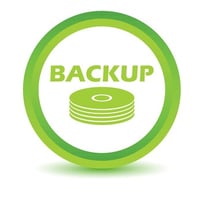 How are you backing up your Los Angeles distribution company data today?
How are you backing up your Los Angeles distribution company data today?
Regularly saving critical business data files to a safe backup medium is a start. However, image backup offers much more in terms of backup and recovery efficiency.
This kind of backup can save the contents of the entire disk drive (the “image”) quickly and easily. In some cases, it can even mean the difference between recovering after a computer failure or data corruption, or not.
The reason is simple. While your data files are essential, it takes more to get your PC or server to work again. Consider a server application like the one that manages your reseller order database or your email system.
Besides the data, you must also recover the application itself, plus all of its configuration information and user profiles. Even PCs running MS Office will need their product keys entered again if you are recovering data and applications separately.
Backing up complete disk images avoids the problem. You make an exact copy of your hard drive. You can then restore that exact copy later to recover your server or PC to the same state as the copy.
The restore process is faster and more reliable than trying to reconstruct everything from files here, there, and everywhere.
Server Image Backup Tips
Get the most out of this kind of complete hard drive backup by following the tips below.
- Make sure you have enough space on your backup medium to hold the entire image of the hard drive you are backing up. Quarts do not fit into pints: if your disk drive has a one-terabyte capacity, you need at least one terabyte of free space elsewhere to back it up.
- Do your backups of disk images regularly. Depending on your business, it may make sense to do them once a day, once a week, or at some other frequency. You can also combine this kind of complete backup with more frequent backups of individual critical data files. With this two-pronged approach, you get reasonable assurance of fast, up to date recovery at any time, without having to make an unreasonable number of copies of each disk drive.
- Automate these backups to ensure they happen like clockwork. You can make backups of your disk images outside of typical working hours to avoid any impact on people using the system.
- Pick a backup solution that lets you back up the incremental changes in your disk image. That way you will not be obligated to transfer the entire contents of the disk each time. Similarly, look for a backup application that allows you to restore either the entire image or separate files within that image.
- Take advantage of cloud storage for making your complete backups of disk images, especially if your backup solution lets you transfer just what was changed since the last time. Cloud data storage is inexpensive, highly resilient, and flexible.
Further features with image backup applications can include automatically excluding unused disk space for faster backups and backups to multiple targets, for instance, cloud storage and local storage on your site.
Is your distribution company using image backups? If so, tell us how it is working for your firm in the Comments Section below.
To follow up on the tips in this article, download your free guide, How COOs at Los Angeles Distributors and Manufacturers Get More Done: A Guide to Productivity, Data, Staffing, Delegation, and Making It Home for Dinner Most Nights.
/fpa-logo-tagline.gif)






